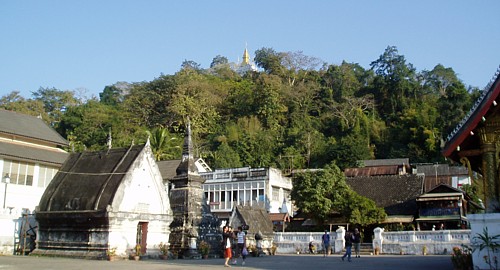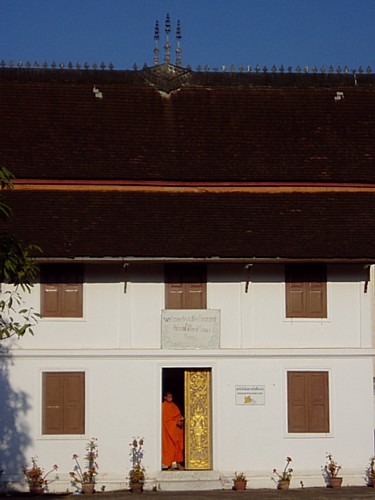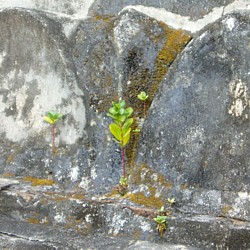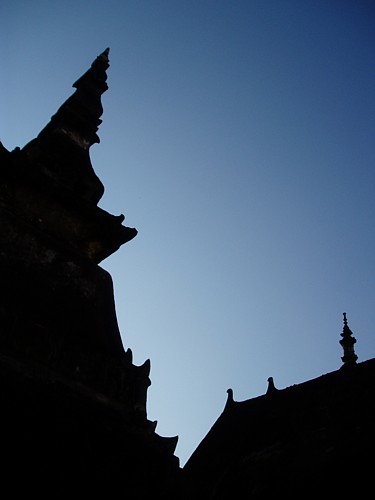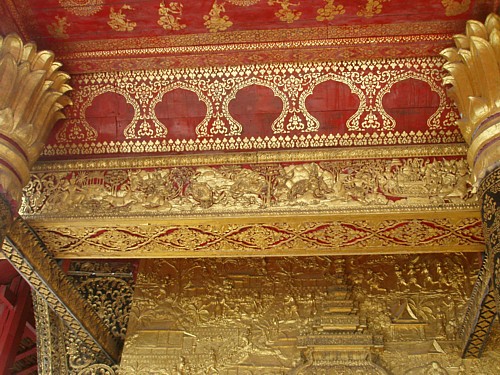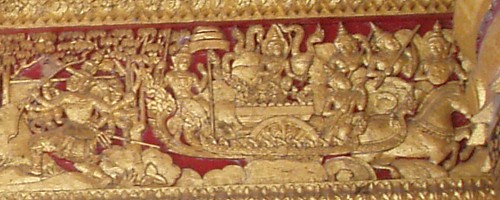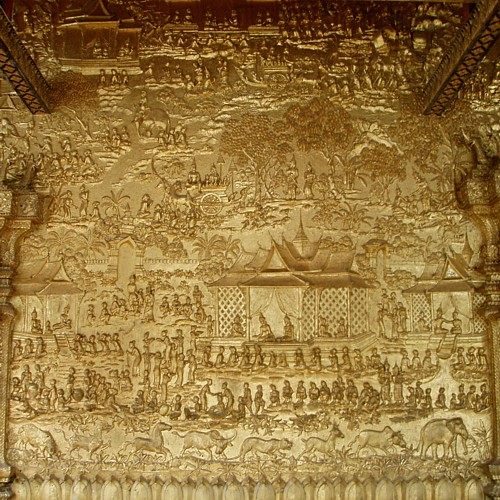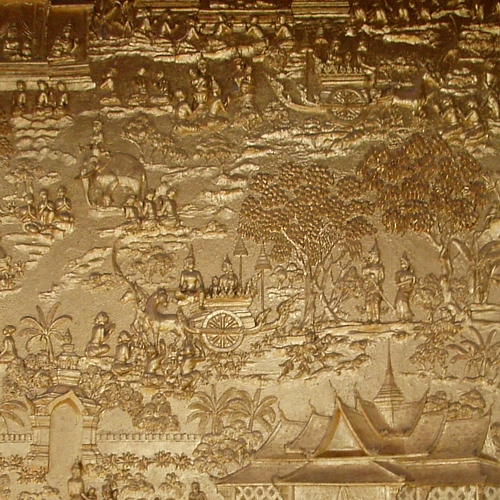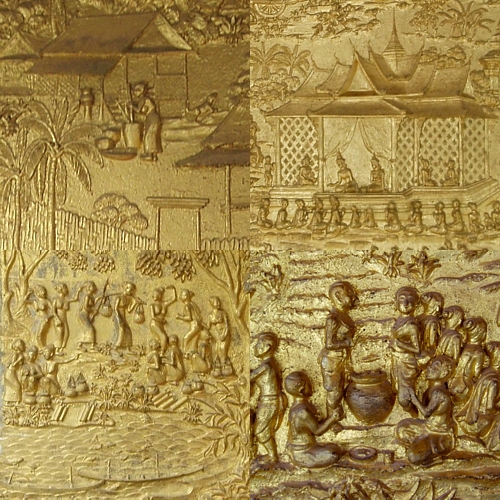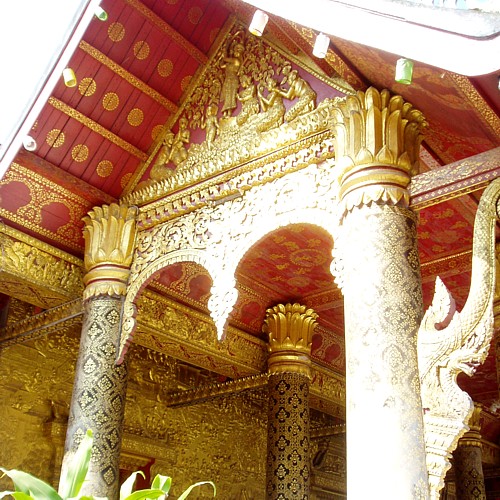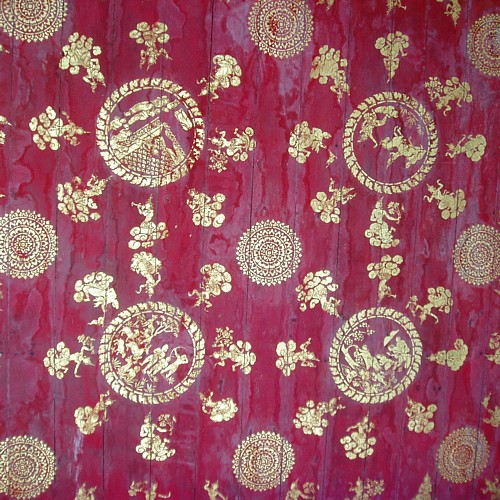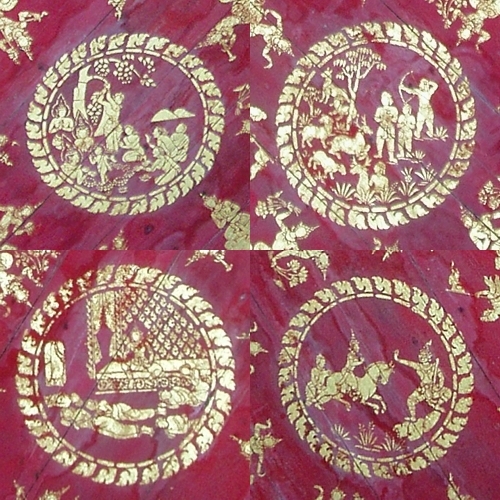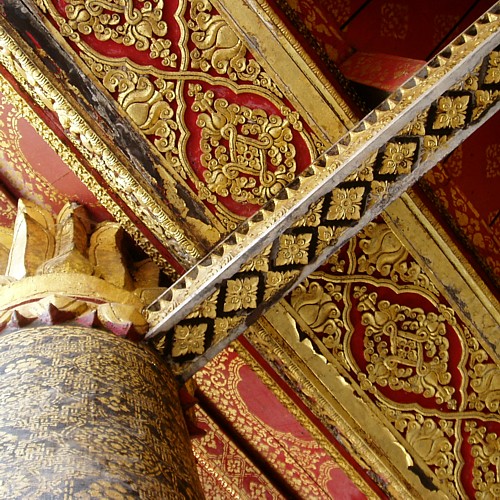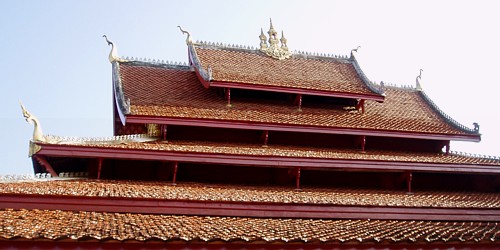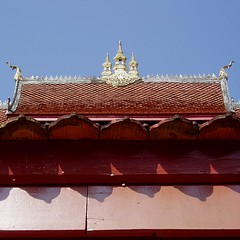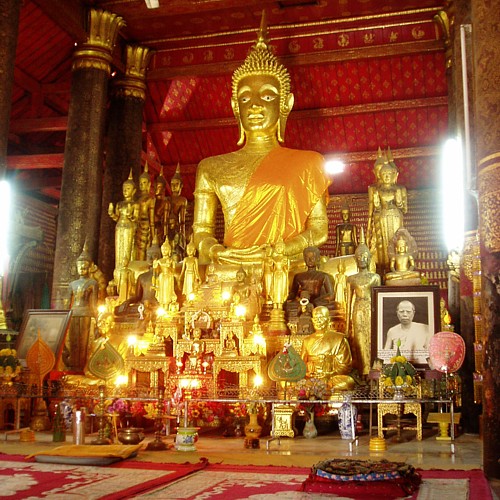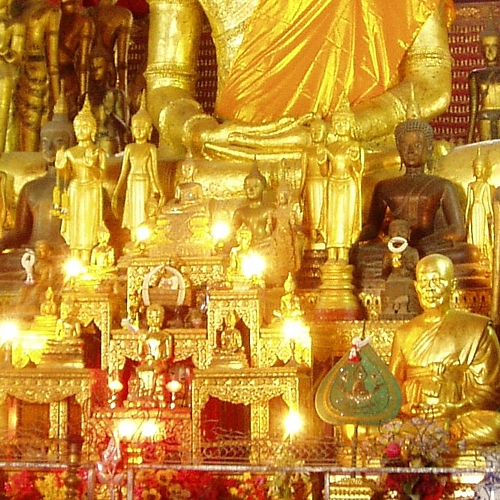First posted on 30 March 2007.
Revised on 11 January 2009.
Notes in square brackets added by the cat.The guys & girls who have been educating the cat on all things Lao & providing you readers with all the bits & pieces on Lao language, culture, society, village life & education system, Theravada Buddhism & more, & who are referred to as the Lao 'consultants'...
Among them are
Tai Lue,
Hmong, Lao
Phuan, Tai Lao,
Khmu &
Mien from Oudomxay (Nga, Xay & La districts), Sayabouly, Luang Prabang (Luang Prabang & Vieng Kham districts), Vientiane (Kasy district), Savannakhet (Champhone district) & Bokeo (Huay Xai & Ton Pheung district) provinces.
Like many Lao boys whose families cannot afford to educate them, many of the male consultants ordained as Buddhist novice monks in order to pursue their education beyond the five years of primary school that is free for all Lao citizens...well at least those who have access to a school, & time off from helping their parents in the fields & taking care of younger siblings & chores at home to attend school. Education at secondary & high school level is not free. Many villages are also located way beyond walking/cycling distance of the nearest secondary/high school, &
boarding facilities, if any, are limited & basic. Monks & novices can get around this by living in nearby temples, & also do not need to spend on food, clothing & other daily necessities, reducing their expenses to the bare minimum of stationery, exercise books, school fees & a trip home to visit their families once a year (or in 3-5 years for some).
Girls do not have this option & many never make it beyond primary school. However, there are also families that see the importance of educating their daughters, & pack their sons off to be novices so that the money saved can be used to send the girls to school. After working in cities as house maids & manual labourers, some older siblings also realise the social mobility that education provides, & pool resources & convince their elders to let their younger sisters continue with their studies. Several ethnic groups in Laos are traditionally animist, but there are Akha, Hmong & Khmu parents who allow their sons to ordain as Buddhist novices in order to further their education, & there are temples & schools that are willing to accept them.
Five of the consultants are featured below.
Consultant #1...first went to a monastery in Huay Xai district, 2 hours' walk + a day & a half's boat ride along the Mekong + a truck ride over the then-
unpaved HWY3 from his village, which has no road access. Back then Bokeo province had no monastic high school, so a few years later he moved to Luang Prabang, which has two high schools for monks at Wat Sop & Wat Siphoutthabat. He is now completing high school at the ripe old age of approximately 21. Like most born in remote villages before the days of calendars, electricity & TV, only heaven knows his actual birthdate.
In his own words:"I would tell you about my storyed I became a monk and lived at the temple because I had studied many thing in the temple, outsided also [referring to his high school] and I don't have home in L b [Luang Prabang] so I like lived at the temple and I don't know my destinate [destiny] if I have a good way I'd like stop a monk and leaved from the temple study continues [continue studying] but if I have a no good way maybe I'll stay at the temple along time."
"...have you introduce my used writing English...I must apologized that my blessing is not correct I hope you know well and I'm learning so is not perfect as you want any I'll try my very best. I promiss you I won't to give up util I reach my goal."
"...and my goal is about mine studying in English because I need to use my English perfect. and when I finish school I have to study at University continues then i will try to study hard more. but i have a broblem for pays the term a lots of money. maybe i will choise be a police man So i haven't to pays alots of money."
"...i would tell you that maybe next week i will go to [edited] my village because there are temple fair and i would like beg money with [from] my parrents for pays examanations now i had paid it's not enough."
Consultant #2...is 20 & finishing high school this April. When told that the cat is in graduate school, he asked it to teach him the English words for ปริญญาโท parinyaa thoh (Master's degree) & ปริญญาเอก parinyaa ehk (doctorate), & wrote it down on a piece of paper where he'd written down a Pali chant he was trying to memorise.
On how guys from his village who have made it beyond primary school did so by becoming novice monks:"...my village no any secondary or high school...almost people from my village studies in [town] and about four people study in Thailand [all monks, of which three are receiving free tuition & board at Buddhist universities] five people study in [city] and some people is the last year of Begelor degree."
"we can not study in university because we are poor and our parents live in country side they can not fine money for us to study."
On being a youngest son in a matrilineal ethnic group where big sis is big boss:"...i was not enjoying when i was youngest child because i have to work such as i have wake up early every day to carry the sticky rice from the field to the house, i worked very hard because my father passed away when i was [X] years old. when i was little boy, i would to like to study but my older sister doesn't like me to study...she want me to work with her husband, so i have to work and got up early every day..."
"When i studied in [town] i never got money from my older sister in [village] and she doesn't want supposting me to learn but my mother would like me to study so, my mother gave me small money to study and i found it by myself..."
"i hope to go to Thailand, maybe i can live there [in same monastery] with my relative if i study hard maybe i can get a Masters degree. but Doctorate it's too high for me."
"i am last year in high school. maybe i should not go to thailand because it is too difficult [he meant expensive] for me."
On how he wants his younger sister to be the fourth girl from his village to attend secondary school:"...my village is the same problem nearly all of the girl in my village can not read and write...some Tai Lue's girl can read and write but not many people..."
"...there are about three girls from my village to study in [town]...for my goals, i would like to suporst my younger sister to study higher...she is studying at last year of primary school but i don't know how to supporst her to study higher and now i'm very far from her, and she lives with my older sister. I think that if she stops studying for 1-2 year then she should not study forever becasue if she still lives with my older sister she could not continue studying in secondary school."
The hurdles to overcome:"...my older sister in [village] doesn't want to suppost my younger sister continue study because she dosen't have money to suppost her but my older sister in [city, working as a maid] would like my younger sister continue study but i don't know she can suppost her or not. i asked my older sister [in village] about my younger sister but she wouldn't like her to move from village because she is very young doesn't know any thing. I am not sure if my younger sister moves to live with my older brother in [town] then my older brother's wife will take take care [of the younger sister] like their son or not."
Temple life is not always a breeze:"Every thing is the same for my life in Wat [name], my abbot is badder than i came here first because last week he was hit my friend."
On tourists who pay the equivalent of a year's worth of college tuition to stay in upscale hotels..."the tourists who visited our temple i think, they are not same us and they live at world wide not like us and we live at only small world and our knowlege can not compare [with that of] tourists..."
Consultant #3...is 19 & will finish high school in 2008. He comes from a large family, & told the cat that he has 'two hundred brothers'. The cat wondered if he was referring to the entire Luang Prabang sangha (community of monks & novices), in which case he was a couple of hundred off the mark. After sorting out the cat's hearing problem & his pronounciation, it transpired that he has 'two elder brothers' out of a total of 8 siblings. He & an elder brother & two younger brothers all became novices to ease their parents' burden. He has a real appetite for languages - Hmong, Lao, Thai, English, Pali & Japanese!
In his own words:"My family in [province] was in the mountain. they palnt corns and rice for food. my old village in [province] is far from [capital town of province] about 3 hours on foot...They plant corn and rice very far from home. we walk from house to the farm of corn and rice about 2 hours. Everywhere we go on foot. we use a horse as our car to carry rice and corn from the farm to home. It's very difficult to live."
On why animist Hmong become Buddhist novices & monks..."Yes, we have own religion as spirituality. But, we are also believed Buddhism, and it is only one way we will have chance to get an education. Because, we are poor and can’t study in public school. So, we have to go to became Buddhism’s Monk and Novice for our education in the future."
"Novice can go to Budhhist school, because it's cheaper than the public school. and we know well that the public school request many types of clothes for classe, sport and many types of shoes, so this make the poor people can't study. For my family. they are poor, so my 2 older brother had droped out school when he finished secondary school. and another older brother had drop out of school for 3 years when he finished secondary school, but he have been a novice in 2001 for Budhhist high school. For me, I also drop out of school 2 years when I finished primary school. then I have been a novice and live with my older brother at [temple name] for Buddhist secondary school until now."
How the cat discovered his aptitude for Maths:"My exams were easy for me. But, I thing it was difficult for other. Because while we were in the class it had many novices & monks came to asked and copied from me."
...if you made a mistake, everyone who copied from you would also have the same mistake..."Yes, I thought that if I made a mistake, everyone would also have the same mistake. But, I was sure that I have done my best when I did it and I hope everyone will be happy that they will have got a good score same me."
Consultant #4...is 24, the eldest of five kids, & crossed the Mekong into Thailand in search for a chance to attend university after completing high school. Back then Laos had only one
university in Vientiane, a 1995 amalgamation of what used to be a bunch of separate higher education institutes in the capital. Now there are three universities, but a large majority of the academic staff have only Bachelor degrees, & <10% hold doctorates. Like Cambodia, Laos lost most of its intellectuals, who either fled the country or did not survive the 'political changes'. There is a heavy reliance on textbooks & teaching materials from Thailand.
He is one of the most fortunate of the lot, having both the brains & opportunity to support himself through university. Although he cannot afford to attend one of the better universities, & has no choice of field of study as he is a monk, the exposure to life & opportunities in Thailand has broadened his horizons. He has been acting as a mentor to a few of the consultants & advising them on their future, & according to those from the same village, he is respected by all villagers including his elders.
On why most Lao monks are younger than 25:"In Laos, all the most monks will be yong because when they are 23-25 years. They will resign from the monkhood. Cause that they resigned has many things. Some monks resigned to work per help theiir family. Some bored in the monkhood. Some be the monk for learn [education] after they will resign. Being the monk is easy for learning and hasn't buying food and hasn't paying staying...And many many other [reasons]"
"In Laos, most monks come from poor family or unprovince or countyside. And poor family cannot support their children, An arphan [orphan] has no relatives to care for him."
On how he is supporting himself through university:"You should think that i have studied in Thailand than my family should be rich. But it is not like you think. In fact in my village is poor very much. I stayed in Thailand for long. And i studied pali for 5 years. So at the temple told me to help to teach Pali for them. And they paid for me...But i teach Pali everyday 3 times per a day {In the morning in the afternoon and in the evening} unless Buddhism holiday [i.e. 6 days per week]. And i hardly have times. I study in [university name] on Saturday & Sunday, But i teach Pali in the Evening Since 7.40 pm."
On a recent trip to a coastal province organised by his temple:"You are good luck because in your country there is the sea but in Laos there is no the sea. You know? many people lao want to see the sea and play it. exaully i had just go to play it for the [first] time that [since] i have lived in Thailand."
Consultant #5...has moved between four districts in two provinces in order to attend secondary & high school & college. Unlike the four consultants above, he was allowed to attend both secondary & high schools for laymen although he was a novice monk. With help from ex-wat-mates & a sponsor, he has obtained a Higher Diploma from a private college while also working towards his Bachelor's degree at the local Sangha College. Currently living in a centrally located temple, he serves as both a religious & social 'point of contact' for others from his home district (as well as their friends from other northern provinces) who have moved to the same city to study, & loans out textbooks & other coursework materials.
Like consultant #1, the date of birth on his ID was plucked out of thin air..."I’m not sure about the birthday because my parent didn’t remember, so I specific in [day] on [month] is my birthday."
On his journey away from home:"My Village have only primary school. Secondary school is far, about 8 Km and the traffic is uncomfortable. I had the old bicycle and sometimes it always broke then I couldn’t fix it. After that I stopped studying then became a novice for one years in my Village, that time I had no study. So my Monk boss sent me to [another village] since I was in fourteen years [old]...Continued in secondary school, then moved to [next place], continued in high school, After that i moved to [city name].
Other (shorter term) consultants include VP, PB, GS, Seng, SKST, Souphanouvong University & Lovanh College students & many more who shared a lot about their lives with the cat during their brief encounters with it, from the provinces mentioned above & also Houa Phanh, Phongsaly, Champasak & elsewhere. However they cannot afford internet access nor postage stamps & envelopes, or live in places where there is neither available, & thus have been unable to continue the exchange.
110109 update:Over the past two years, high school & college diplomas have been completed. One consultant almost topped his high school, but lousy grades in Pali (the subject that he "hates the most") made him settle for second place. A few have gone on to private colleges, & others have made it into university. Some borrow from friends & relatives or rely on sponsors (ranging from Danish to Czech to Vietnamese based in France) to fund their way through, while a handful receive free education at Buddhist universities. One pair who knew the cat before they got to know each other (by coincidence #1) have ended up as university classmates months later (by coincidence #2), & now share rides to university to save on transport expenses. Another, who studies at a separate campus, walks 5km to classes to stretch the funds from a younger sister (working as illegal labour in Thailand) & keep fit.
Some consultants have returned to laylife, while others remain in temples, & more younger brothers have joined them. Two consultants have ended up living together with highly-respected chief monks of the Thai provinces that they are currently studying in, learning & growing a lot in the process. A pair of brothers are now helping to put two younger sisters & two younger brothers through school plus English classes. Another consultant has teamed up with an elder sister & brother to move a younger sister (orphaned at the ripe old age of one) from their village to a town in order for her to continue her studies beyond primary school. Two female consultants have taken a dorm mate's younger sister (from a more remote province) under their wing, plugged her into their network of local contacts, & were last heard trying to get her a place in their technical college.
Things sound a lot smoother than they have actually are, & there have been failed entrance exams, homesickness, scholarship rejections, a motorbike accident, D & D+ exam grades, employers who demand 20-hour working days & dock salaries when employees fall ill, temple politics & a constant threat of 'eviction', a scare involving a probable misdiagnosis of DM, a village-mate addicted to heroin, a beloved kitten flattened by an abbot's car, lost mobile phones, illness requiring long journeys to hospital in Vientiane capital, etc.
Where will all these consultants be in 2016, 10 years from the time the cat got to know the first of them?
